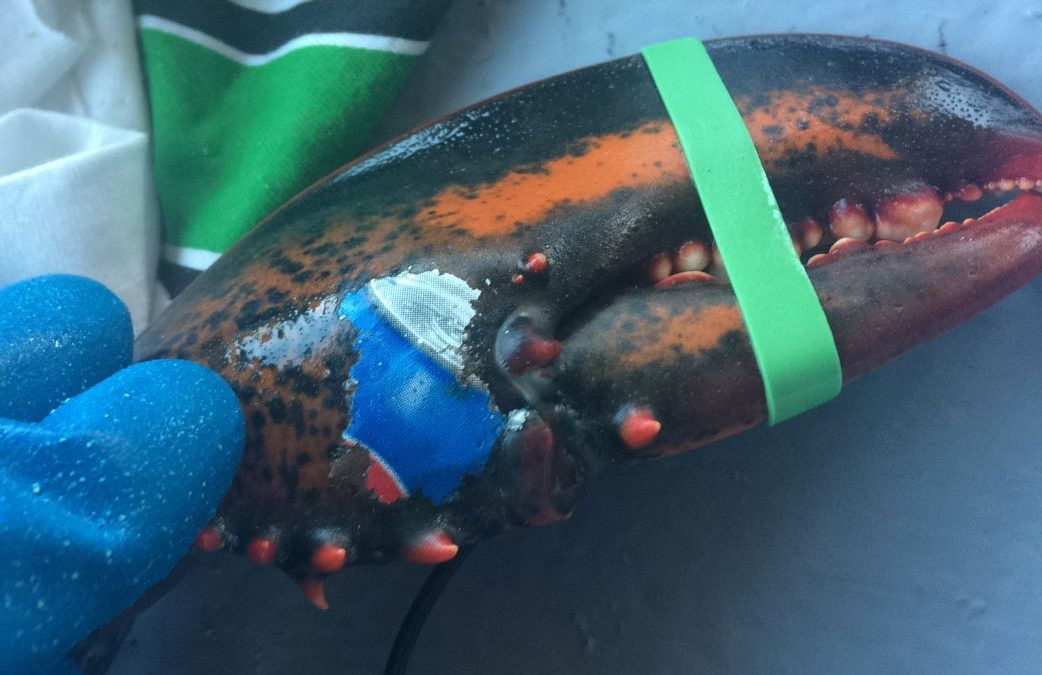Fisherman Karissa Lindstrand was banding lobster claws off Grand Manan Island, New Brunswick, in November when she spotted something unusual on one of the crustacean’s claws—a popular blue and red logo. Upon closer inspection, she discovered it was a Pepsi logo.
“I can’t say how he got it on,” Lindstrand told CBC News. “It seemed more like a tattoo or a drawing on the lobster rather than something growing into it.”
Lindstrand, who has been lobster fishing for four years, showed the bizarre marking to her crew and even the island’s Pepsi delivery man. Some speculate a can got stuck on the bottom of the ocean and the lobster somehow grew around it. Others think a Pepsi box got adhered to the crustacean while it grew.
The discovery is disturbing. “This tells me there is a lot of garbage in the ocean if that’s what’s happening to the lobsters we get out from the water,” Lindstrand noted. “It’s the first time I have seen garbage imprinted on an animal.”
She’s not the only one who is worried about the effect of human garbage on ocean life.
“This is really a unique instance. I haven’t seen something like it before, of such a clear imprint of a can on a marine animal,” commented Matthew Abbott, Fundy baykeeper and marine program coordinator at the Conservation Council of New Brunswick.
Garbage had managed to penetrate the deep depths of the ocean in the location where the lobster lived, and unfortunately, marine debris is all over the place.
“You can’t really name one hotspot because it is well too widespread for that,” Abbot explained.
One of the biggest offenders is plastic because the material breaks down into smaller pieces but never disappears. Some animals think it’s a food source, while others get entangled in it. The results can be deadly.
According to the Center for Biological Diversity: “As plastics break apart in the ocean, they also release potentially toxic chemicals such as bisphenol A (BPA), which can then enter the food web. When fish and other marine species mistake the plastic items for food, they ingest the particles and pass toxic chemicals through the food chain and ultimately to our dinner plates.”
So, what happened to the lobster with the Pepsi tattoo? Lindstrand and her crew sold it with a batch of others they caught that day. She believes it’s in Boston: “It probably already crossed the border.”


